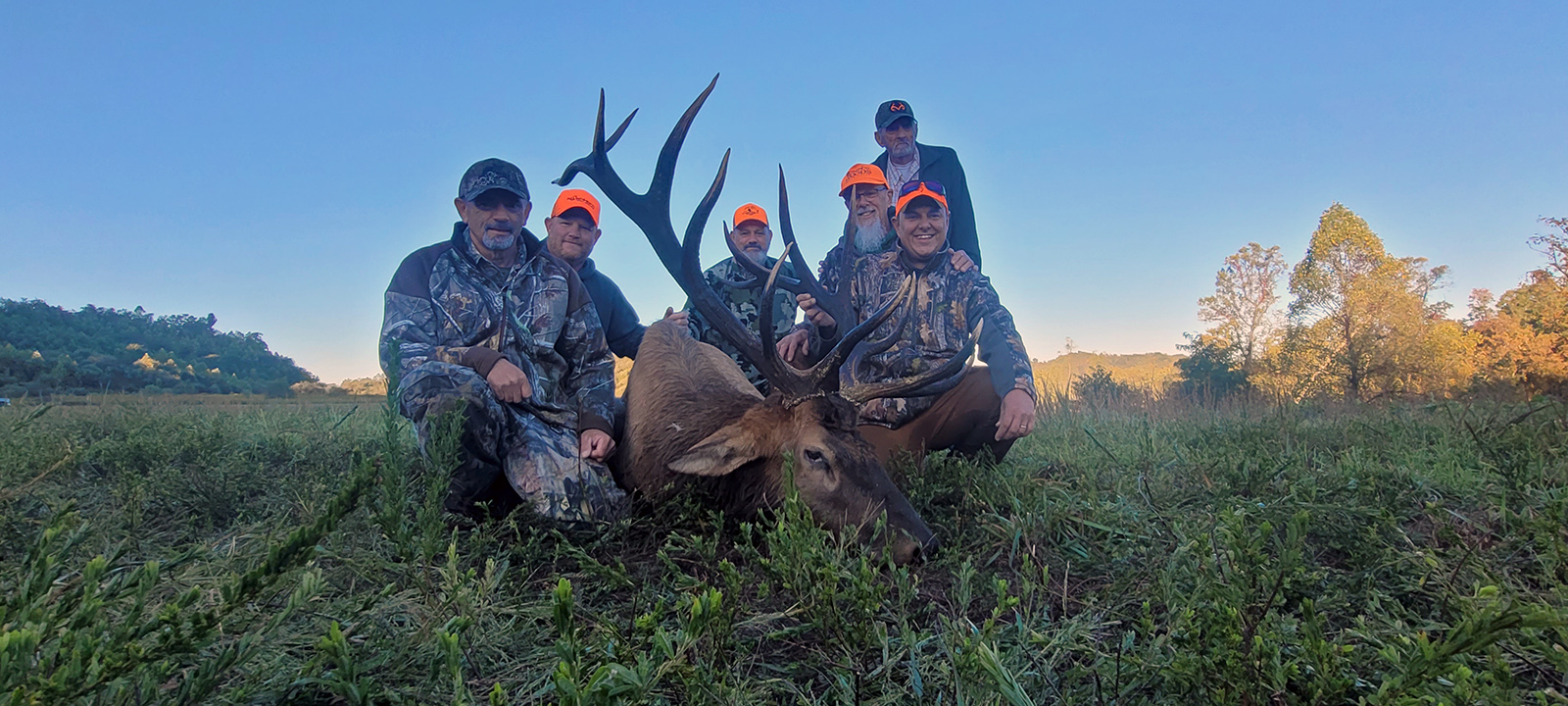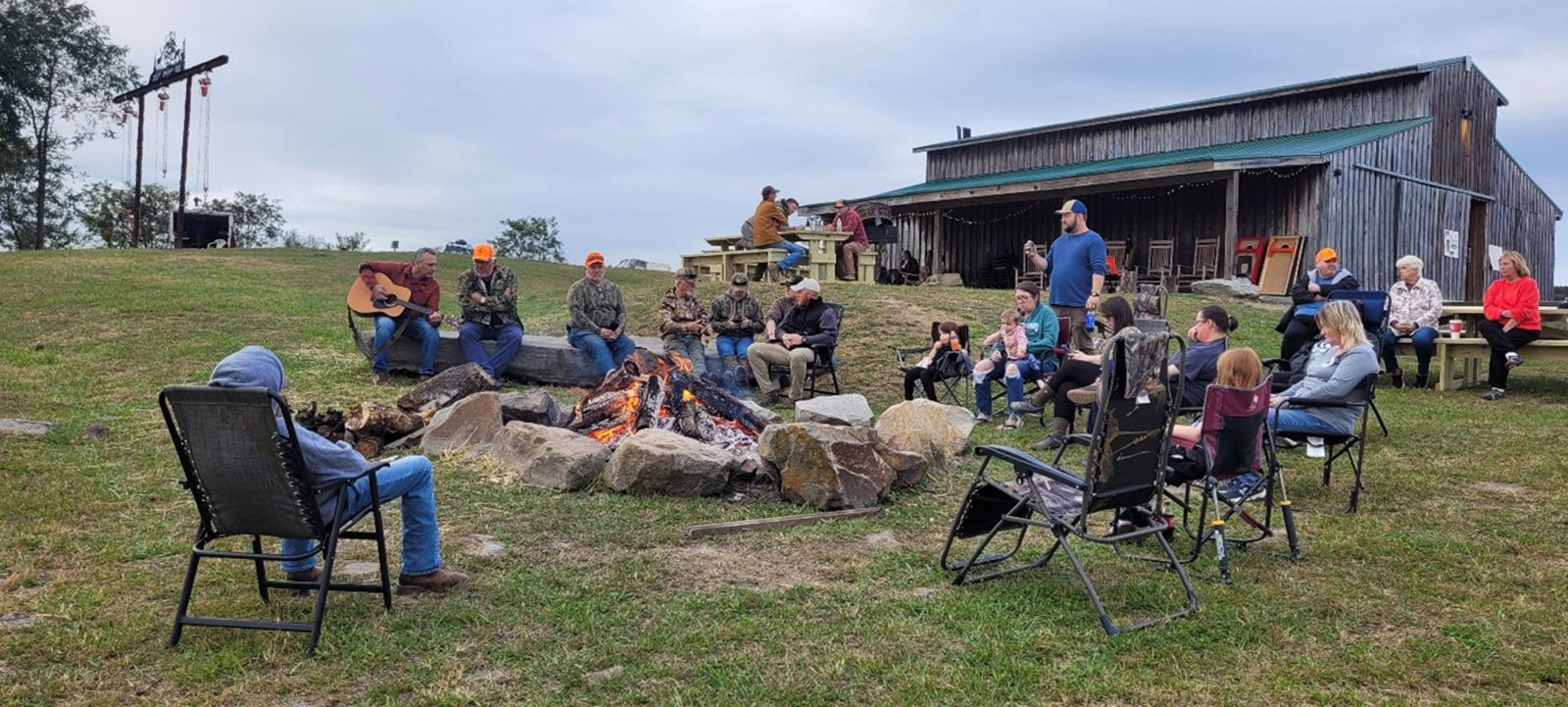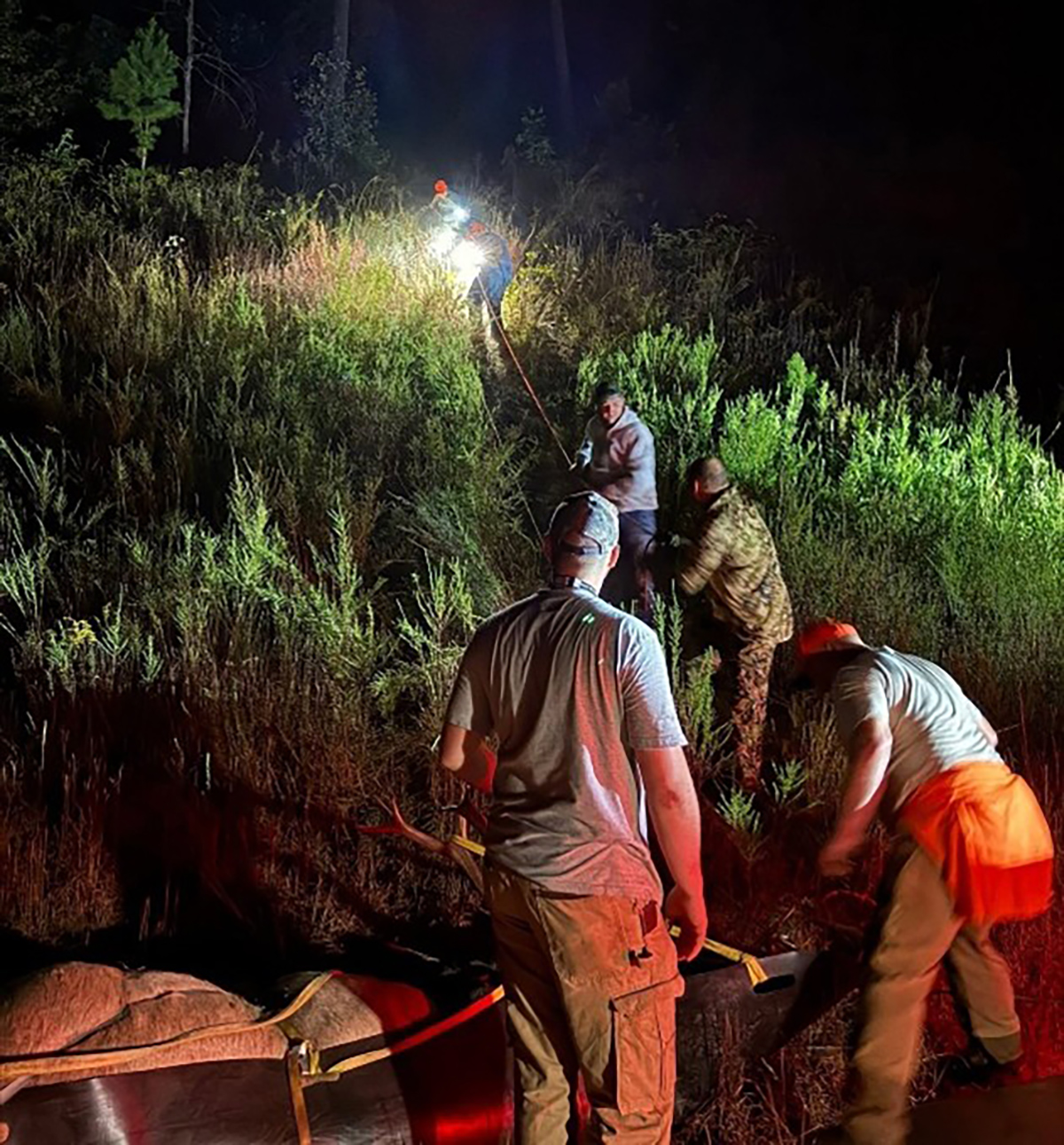Camaraderie and Cooperation Mark the Fourth Annual Elk Camp
By Jackie Rosenberger/DWR
The best part of being the Elk Project Leader at the Virginia Department of Wildlife Resources (DWR) is working with the landowners, volunteers, and local DWR staff who all share the same passion for elk and one another. Coming out of Elk Camp 2025, the passion I feel is as strong as ever. The Virginia elk hunt is more than just a hunt—it’s a one-of-a-kind experience that is filled with fellowship and camaraderie for all who are involved.

One of the lucky hunters with his dad, landowners, volunteer guides, and his 740 lb, 7×7 bull that rough green scored 320 & 1/8 inches gross and 308 & 4/8 inches net for Boone & Crockett typical American elk.
Six lucky hunters come from all over Virginia or beyond and land in Buchanan County every October to be welcomed with open arms and guided through an experience of a lifetime. Volunteer guides take hunters under their wing, making sure hunters are oriented to the lands they have available to them and to accompany them on their hunt. The bonds formed between the volunteer guides and hunters is something that is very rewarding to see unfold. It seems the excitement of our volunteer guides during these hunts equals or sometimes even surpasses that of the hunters! I am so proud of and grateful for these guys for the time they invest in the hunters and the program.
Private landowners are the reason we can offer an elk hunt to the public. Thanks to them, more than 17,000 acres are available to elk hunters. We are very grateful and honored to work so cooperatively with a vast array of property owners, some of whom serve as volunteer guides. Land improvements that we work on together and the presence of elk has invoked a new sense of pride in their properties.
Volunteers with Southwest Virginia Sportsmen get all the credit for their role in creating the Elk Camp atmosphere. A small barn at Southern Gap Outdoor Adventures is used for the camp and the check station. A continuous supply of food and campfires serves as the centerpiece for fellowship. Hunters can come and enjoy a meal when they’re not afield, and many folks are waiting to hear how their hunt is going and to cheer them on.

A few elk camp attendees spend time by the fire, waiting on elk to be harvested.
The views from Southern Gap are phenomenal, arguably some of the best the Appalachians have to offer. Sitting by the fire, watching out over the mountains, and hearing elk bugling in the distance, while surrounded by some of the best, most genuine people in the world just cannot be beat, if you ask me.
There’s no competition at Elk Camp. Guides and hunters who have tagged out will stay to help the remaining hunters in any way they can, whether during their hunt or after they harvest. The most exciting call awaited at the check station is the one that sends a small army of volunteers out to retrieve an elk and bring it back to the check station. Thanks to the efforts of so many volunteers on these ventures, all 24 bulls harvested during the four hunts have been transported back to the check station whole, where both live and dressed weights were measured and organ tissue samples collected. Antlers were also rough, green scored and incisors (teeth) were pulled for aging. When talking about the volunteer effort on the retrieval of his elk through thick woods and steep terrain in the dark, one of this year’s hunters told me “You hear people talk about fellowship. But I got to see fellowship in action.”

A few of the volunteers lowering a harvested bull elk on the last stretch of an intense drag through thick woods and steep terrain in the dark.
Elk are fascinating creatures. Every year, we learn interesting tidbits from the bulls harvested. This year, one of the bull’s ivories (vestigial canine teeth left over from what is believed to be tusks on their ancient ancestors) had a double cusp. This is something that only one of the other eastern elk biologists has ever seen before. Another one of the bulls was sporting a set of ear tags and a GPS collar for which DWR was not responsible. As it turns out, this bull was captured by the Kentucky Department of Fish and Wildlife Resources in Pike County, Kentucky, in January 2023. The straight-line distance from capture to harvest location constitutes roughly 14.5 miles. The impressive movement of this bull was likely driven by the rut (breeding season). And he was the heaviest bull of this year’s hunt, weighing 810 lbs live weight. For more information and photos of the bulls harvested during the past four Virginia elk hunts, check out this year’s and historical harvest data.
Jackie Rosenberger is DWR’s elk project manager.
Legal Disclaimer:
EIN Presswire provides this news content "as is" without warranty of any kind. We do not accept any responsibility or liability for the accuracy, content, images, videos, licenses, completeness, legality, or reliability of the information contained in this article. If you have any complaints or copyright issues related to this article, kindly contact the author above.
